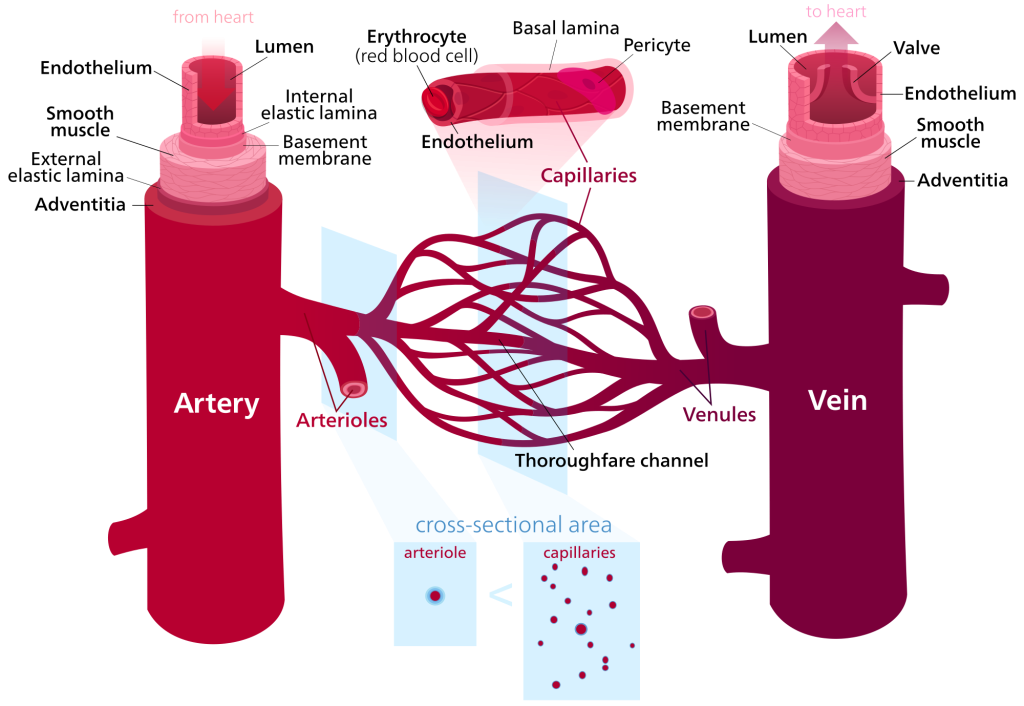
Oxygenated blood is the lifeline of the human body, as it is the form of blood that is richly supplied with oxygen and carries this essential gas to all the tissues and organs where it is needed for energy production and cellular activities. It is bright red in color due to the high level of oxygen bound to hemoglobin in red blood cells, and it flows through arteries, delivering oxygen that powers metabolism and sustains life. Oxygenated blood is not only important for nourishing the body but also for maintaining balance in every physiological process, since without oxygen delivery, cells would be unable to produce the energy required for survival. By examining its functions, composition, and circulation, we gain a clearer understanding of how oxygenated blood ensures the continuous supply of life-supporting oxygen throughout the body.
READ ALSO – Elementary Canal And Its Functions
Understanding Oxygenated Blood: Composition, Functions, and Circulation
What is Oxygenated Blood?
Oxygenated blood is the blood that has been enriched with oxygen in the lungs and is transported to tissues and organs to sustain life. It is bright red due to the presence of oxygen bound to hemoglobin in red blood cells.
Composition of Oxygenated Blood
Oxygenated blood contains:
- High Oxygen Content – It carries oxygen from the lungs to the body’s cells.
- Low Carbon Dioxide Content – After exchanging carbon dioxide in the lungs, it contains minimal waste gases.
- Nutrients and Hormones – It transports essential nutrients and hormones required for cellular function.
- Essential Proteins and Electrolytes – It contains plasma proteins and electrolytes that help maintain bodily functions.
Functions of Oxygenated Blood
Oxygenated blood plays a crucial role in:
- Oxygen Delivery – It supplies oxygen to tissues for cellular respiration and energy production.
- Nutrient Distribution – It carries glucose, amino acids, and other essential nutrients to cells.
- Carbon Dioxide Removal – It facilitates gas exchange by replacing carbon dioxide with oxygen in the lungs.
- Immune System Support – It carries white blood cells and antibodies to fight infections.
- Body Temperature Regulation – It helps maintain homeostasis by distributing heat.
- Waste Removal – It assists in transporting waste products to organs like the liver and kidneys for filtration.
How Oxygenated Blood Circulates
The circulation of oxygenated blood follows this path:
- From the Lungs to the Heart:
- Oxygen-rich blood enters the left atrium via the pulmonary veins.
- It then moves through the mitral valve into the left ventricle.
- Distribution to the Body:
- The left ventricle pumps oxygenated blood into the aorta.
- From the aorta, it travels through arteries and capillaries to supply oxygen and nutrients to tissues.
- Return of Deoxygenated Blood:
- After delivering oxygen, blood collects carbon dioxide and waste, returning to the right atrium via veins, completing the cycle.
Importance of Efficient Oxygenated Blood Circulation
A healthy oxygenated blood supply is essential for overall well-being. Poor circulation can lead to:
- Hypoxia – Insufficient oxygen supply causing fatigue and organ damage.
- Cardiovascular Diseases – Blockages can lead to heart disease, strokes, or hypertension.
- Tissue Damage – A lack of oxygen can result in cell death and impaired organ function.
READ ALSO – Deoxygenated Blood and its Functions, Composition and Circulation
Revision Questions and Answers on Oxygenated Blood and its Functions
1. What is oxygenated blood, and why is it important?
- Oxygenated blood is blood enriched with oxygen in the lungs. It is important because it supplies oxygen and nutrients to tissues, ensuring proper cellular function and energy production.
2. What are the main components of oxygenated blood?
- Oxygenated blood contains high oxygen levels, low carbon dioxide content, essential nutrients, hormones, proteins, and electrolytes necessary for bodily functions.
3. How does oxygenated blood circulate through the body?
- Oxygenated blood moves from the lungs to the left atrium, then to the left ventricle, which pumps it into the aorta. It travels through arteries and capillaries to deliver oxygen and nutrients before returning as deoxygenated blood to the right atrium.
4. What health issues can arise from poor oxygenated blood circulation?
- Poor circulation can cause hypoxia (oxygen deficiency), cardiovascular diseases like heart attacks and strokes, and tissue damage due to insufficient oxygen supply.
Summary
What is Oxygenated Blood?
Oxygenated blood is blood that has been enriched with oxygen in the lungs and is transported throughout the body to sustain life. It appears bright red due to oxygen binding with hemoglobin in red blood cells.
Composition of Oxygenated Blood
Oxygenated blood has a high oxygen content, which is essential for cellular respiration. It has a low carbon dioxide concentration since most waste gases have been expelled in the lungs. Additionally, it carries vital nutrients, hormones, plasma proteins, and electrolytes, ensuring proper bodily functions.
Functions of Oxygenated Blood
Oxygenated blood plays a key role in maintaining life. It delivers oxygen to tissues for energy production and transports nutrients required for cellular functions. It helps remove carbon dioxide from the body, supports the immune system by carrying white blood cells and antibodies, regulates body temperature, and aids in the removal of metabolic waste through filtration organs.
How Oxygenated Blood Circulates
Oxygenated blood flows from the lungs to the heart through the pulmonary veins, entering the left atrium. It then moves into the left ventricle, which pumps it into the aorta. From the aorta, blood travels through arteries and capillaries to reach body tissues. Once oxygen is delivered, deoxygenated blood carrying waste returns to the right atrium via veins, completing the circulatory cycle.
Importance of Efficient Oxygenated Blood Circulation
Proper circulation of oxygenated blood is crucial for overall health. Poor circulation can result in oxygen deprivation (hypoxia), leading to fatigue and organ damage. It can also contribute to cardiovascular diseases such as hypertension and strokes. Insufficient oxygen supply can impair tissue function and lead to cell death.
Conclusion
Understanding oxygenated blood and its role in the body emphasizes the need for a healthy circulatory system. Efficient oxygen delivery supports cellular functions, immune defense, and metabolic waste removal, making it vital for overall well-being.
